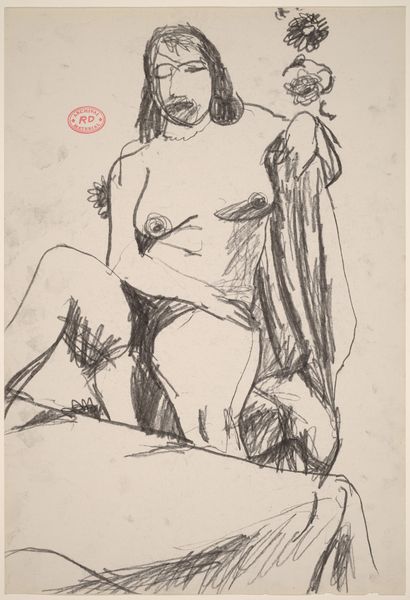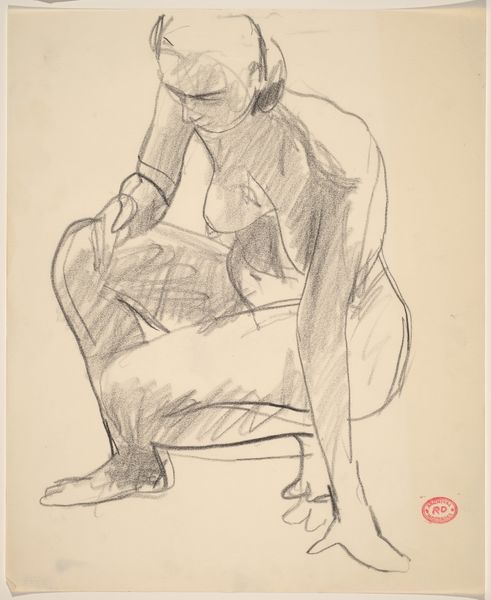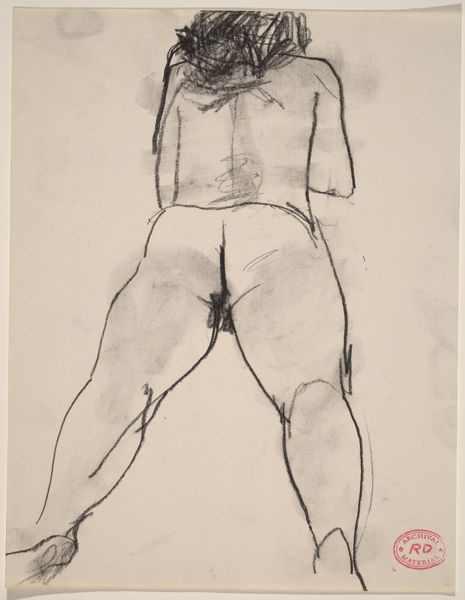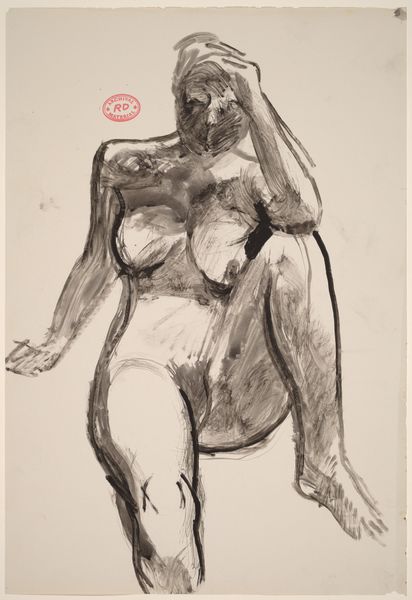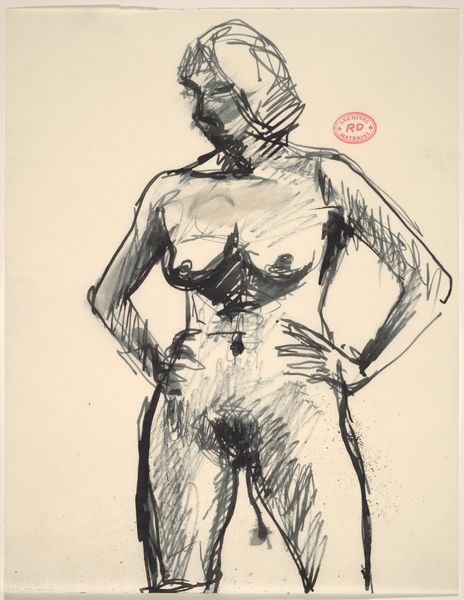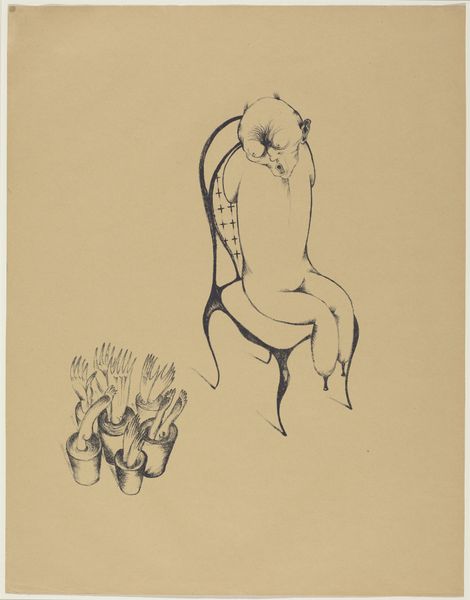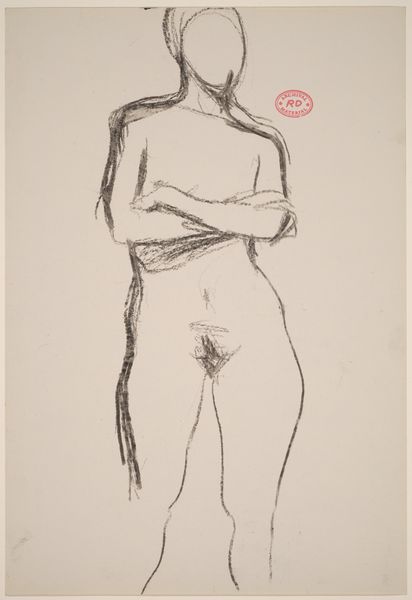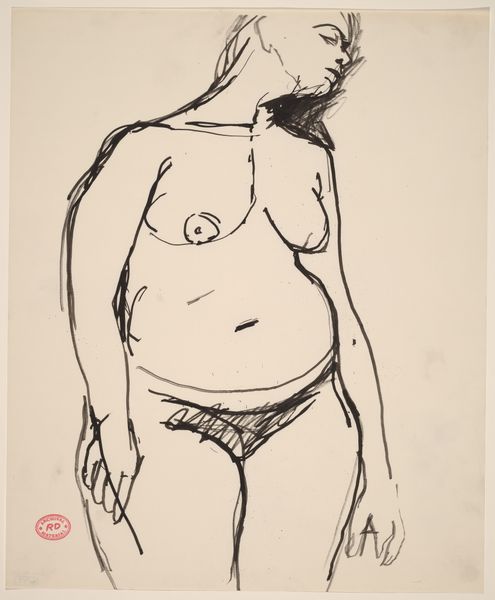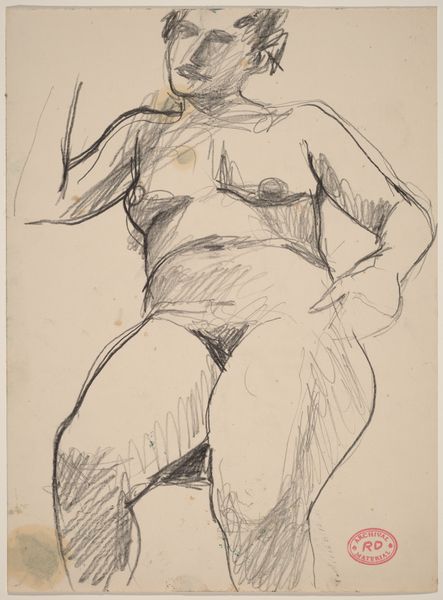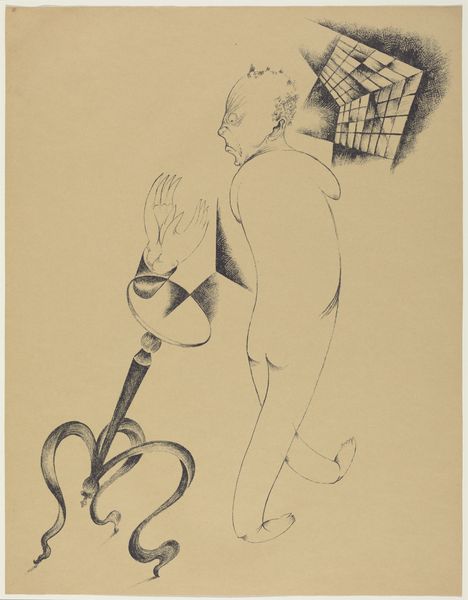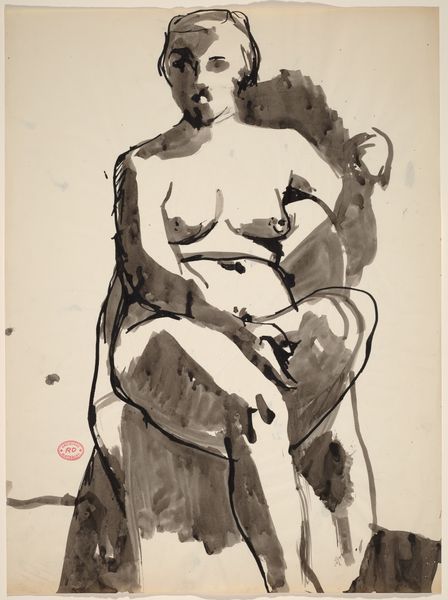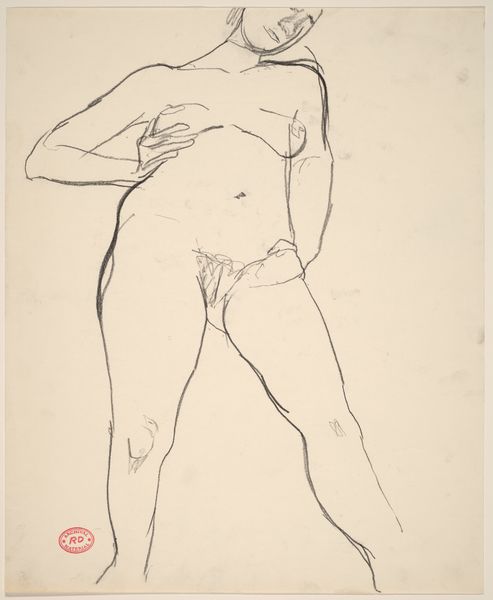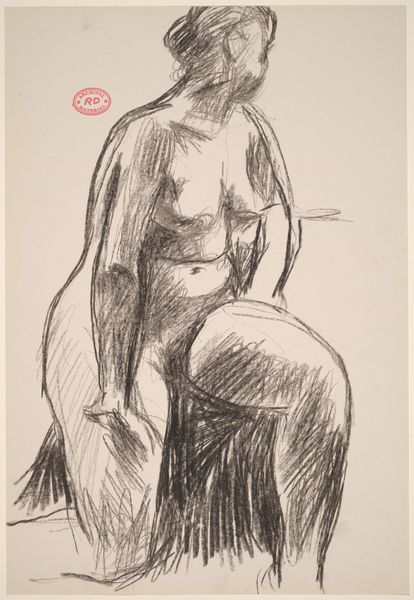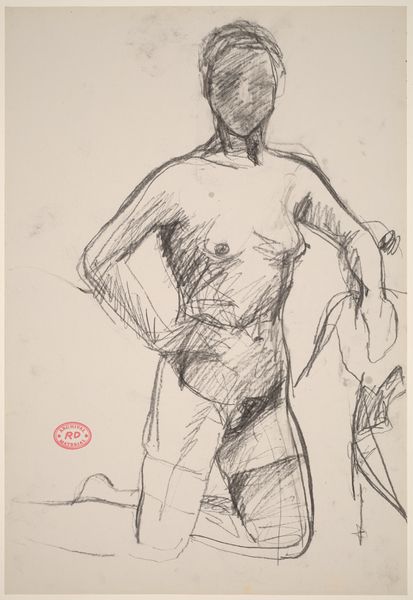![Untitled [female nude holding plants] by Richard Diebenkorn](/_next/image?url=https%3A%2F%2Fd2w8kbdekdi1gv.cloudfront.net%2FeyJidWNrZXQiOiAiYXJ0ZXJhLWltYWdlcy1idWNrZXQiLCAia2V5IjogImFydHdvcmtzLzU2MTI1NWI5LThkNzYtNGNiNi1iYTI1LTRlMTNkYjZkMzQ0Mi81NjEyNTViOS04ZDc2LTRjYjYtYmEyNS00ZTEzZGI2ZDM0NDJfZnVsbC5qcGciLCAiZWRpdHMiOiB7InJlc2l6ZSI6IHsid2lkdGgiOiAxOTIwLCAiaGVpZ2h0IjogMTkyMCwgImZpdCI6ICJpbnNpZGUifX19&w=3840&q=75)
drawing, pencil
#
drawing
#
figuration
#
bay-area-figurative-movement
#
pencil
#
nude
Dimensions: overall: 27.9 x 21.6 cm (11 x 8 1/2 in.)
Copyright: National Gallery of Art: CC0 1.0
Editor: This is an untitled pencil drawing by Richard Diebenkorn, dating somewhere between 1955 and 1967. It's a nude figure, a woman holding some plants. The sketchiness of the lines gives it a really intimate, almost unfinished feel. How do you interpret this work? Curator: The "unfinished" quality you notice is key. Consider the post-war American art scene: Diebenkorn and others were wrestling with legacies of Abstract Expressionism, grappling with issues of representation and authenticity. Nudes, historically a domain of academic art, became a space for re-evaluation. How does Diebenkorn's loose handling of line challenge the traditional, often idealized, representation of the female body? Editor: It feels like he's less interested in capturing perfect form and more in capturing a fleeting moment, or a raw impression. There's a vulnerability there, perhaps. Curator: Precisely. The plants further complicate the narrative. They could symbolize nature, fragility, life... but also, importantly, *cover* the body, almost as if attempting to negotiate the viewer’s gaze and societal expectations around the nude. In what way does the presence of foliage impact your reading of the image? Editor: I guess it makes me think about how female bodies have been portrayed throughout art history – often very posed and artificial. Here, the plants almost seem to offer a sense of protection or naturalness. Curator: Exactly. Diebenkorn engages with these traditions and subverts them, pointing to the power dynamics inherent in visual representation and raising questions about who gets to look, and how. Editor: That's fascinating. I hadn't considered the historical context of the nude and how Diebenkorn is actively responding to it through his composition and technique. Curator: Considering Diebenkorn's drawing in context is valuable, it reveals the art's layered cultural conversation around how museums, galleries, and socio-political forces have influenced its making.
Comments
No comments
Be the first to comment and join the conversation on the ultimate creative platform.
